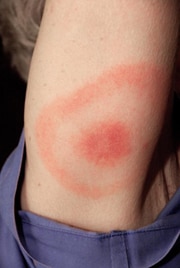
New data from the Centers for Disease Control and Prevention (CDC) show tickborne diseases are again on the rise. In 2017, state and local health departments reported a record number of cases of tickborne disease to CDC, 59,349 cases, up from 48,610 in 2016. Reported cases of Lyme disease, anaplasmosis/ehrlichiosis, spotted fever rickettsiosis (including Rocky Mountain spotted fever), babesiosis, tularemia and Powassan virus disease all increased from 2016 to 2017. While the reason for this increase is unclear, a number of factors can affect tick numbers each year, including temperature, rainfall, humidity, and host populations such as mice and other animals. Tick densities in any year will vary from region to region, state to state, and even county to county. Numbers of reported tickborne disease cases are also impacted by healthcare provider awareness, testing, and reporting practices. Finally, during any given year, people may or may not notice changes in tick populations depending on the amount of time they or their pets spend outdoors. Additional Resources:
|






















.png)









No hay comentarios:
Publicar un comentario